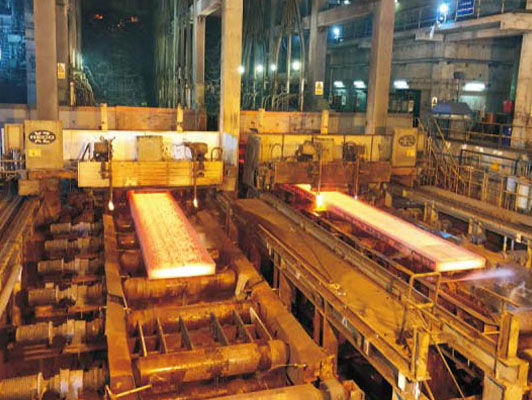In the world of steel manufacturing, understanding the differences between various steel products is crucial for making informed decisions. Two commonly used terms in the steel industry are "slab" and "billet." While both are semi-finished steel products used as raw materials for further processing, they have distinct characteristics and applications. In this article, we will explore the differences between steel slabs and billets, helping you understand their unique properties and uses.
A steel slab is a thick, flat steel sheet that has been rolled and cooled from a continuous casting machine (CCM). It is typically used as a raw material for producing flat products such as hot-rolled coils, sheets, and plates.

Dimensions: Steel slabs are generally thicker and wider than billets. They typically have a thickness of 200-250 mm and a width of 900-2000 mm.
Applications: Slabs are used in the production of structural steels, shipbuilding, pipes, pressure vessels, boilers, heavy metal structures, and offshore structures.
Production Process: The production of steel slabs involves continuous casting, where molten steel is poured into a water-cooled copper mold. The slab shell solidifies gradually along the periphery of the mold, and the slab is then cut to the desired length.
Quality Control: Steel slabs undergo stringent quality control measures to ensure they meet international standards such as DIN, EN, JIS, ASTM, and Chinese GB.
Dimensions: Steel billets are generally smaller in size compared to slabs. They typically have a cross-sectional area of 100-225 mm² and a length of several meters.
Applications: Billets are used in the production of rebar, wire rods, angles, channels, and other long steel products.
Production Process: The production of steel billets also involves continuous casting, where molten steel is poured into a mold and solidifies into a billet shape. The billet is then cut to the desired length.
Quality Control: Steel billets undergo quality control measures to ensure they meet the required standards for strength, durability, and consistency.
Slabs: Thicker and wider, with a rectangular cross-section.
Billets: Smaller and narrower, with a rectangular or square cross-section.
Slabs: Used primarily for flat products such as sheets, plates, and coils.
Billets: Used primarily for long products such as bars, rods, and sections.
Slabs: Produced through continuous casting and rolled into flat shapes.
Billets: Produced through continuous casting and rolled into long shapes
Slabs: Further processed into products like hot-rolled coils, sheets, and plates.
Billets: Further processed into products like rebar, wire rods, angles, and channels.
Slabs: Suitable for projects requiring flat steel products, such as construction, shipbuilding, and manufacturing of large structures.
Billets: Suitable for projects requiring long steel products, such as infrastructure, automotive, and general manufacturing.
Choose a reputable supplier with a proven track record of delivering high-quality steel products. HUARO Steel, for example, is known for its commitment to quality and customer satisfaction.